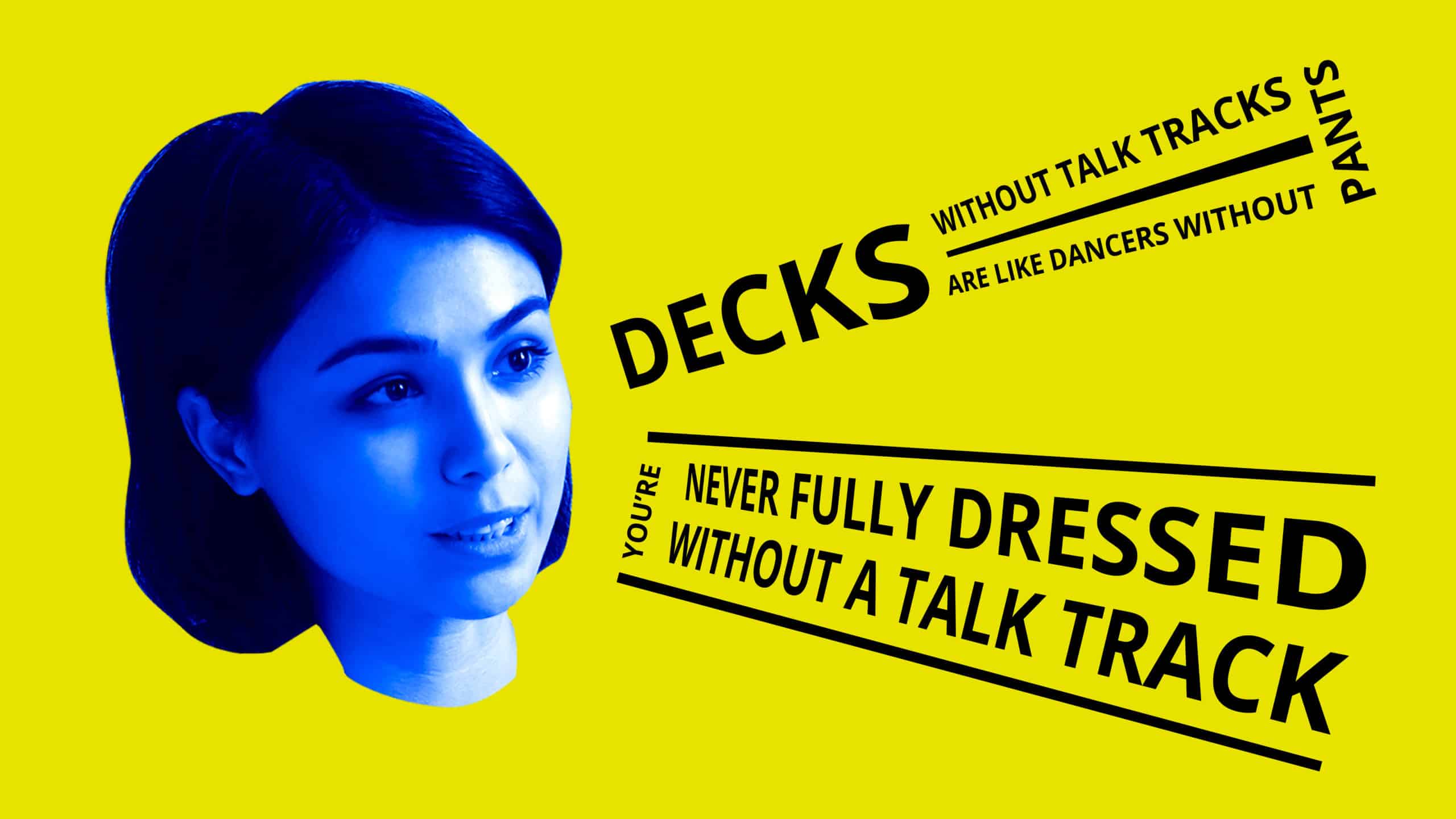
We’ll be the first to admit that building a PowerPoint deck is a strange dance. First, you whittle the key points into slides using design to make them visually compelling, then you write the talk track to tell the overarching story. It seems out of order, but over the years we always come back to it. We’ve learned that by carefully deconstructing and then retelling the story it gets stronger and clearer.
In the race to the perfect presentation, talk tracks are often overlooked. The energy goes into developing the slides, and when they’re done, the presentation seems ready. But it’s important to remember that presentations are about speakers presenting. Slides provide smart visuals that give the main points wings, but it’s the talk track that determines how well your speaker lands the story.
A talk track is a well-constructed script that can be practiced by the speaker to ensure they’re interpreting and sharing the story the way you intended. It provides an easy-to-follow narrative that gives speakers confidence and enriches the slides. From a pitch deck to a keynote, every presentation needs a talk track. It can make the difference between a sale and a goose egg, or a high-earnings projection and a slip in market confidence.
By following the 2A approach of whittling, prodding, and testing, you can build a better story for your slides and your speakers. And be confident that speakers from anywhere—with any level of expertise—can bring the story to life.
Want some help practicing your presentation dance moves? Let’s give it a twirl together!

